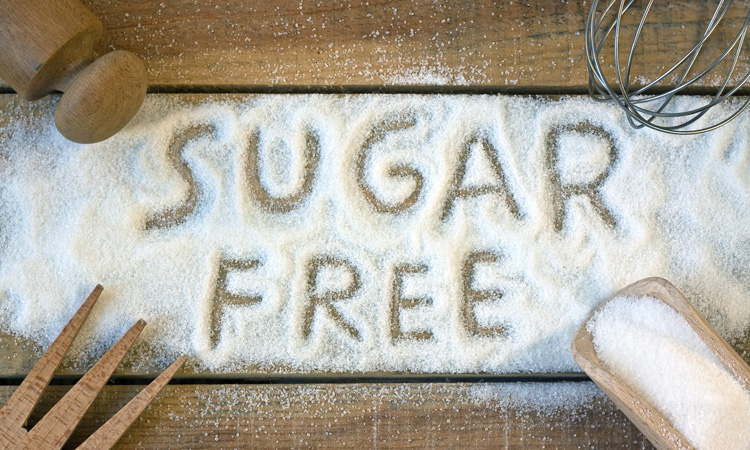Reformulating with less or no sugar in the clean label era
- Like
- Digg
- Del
- Tumblr
- VKontakte
- Buffer
- Love This
- Odnoklassniki
- Meneame
- Blogger
- Amazon
- Yahoo Mail
- Gmail
- AOL
- Newsvine
- HackerNews
- Evernote
- MySpace
- Mail.ru
- Viadeo
- Line
- Comments
- Yummly
- SMS
- Viber
- Telegram
- Subscribe
- Skype
- Facebook Messenger
- Kakao
- LiveJournal
- Yammer
- Edgar
- Fintel
- Mix
- Instapaper
- Copy Link
Posted: 25 November 2019 | Andrea Tolu | No comments yet
Andrea Tolu explores the role of sugar in the clean label era, and hears from food technologist Raphaëlle O’Connor for her expert view…


The demand for clean label products is creating new market segments and opportunities for food manufacturers. These opportunities, however, come with a challenge: consumers want ‘simple’ formulations with ‘natural’ ingredients, but those terms have different meanings for different people, and evolve over time. Clean label is still an elusive concept.
A typical example of this challenge is finding suitable replacements for sugar, one of the most vilified ingredients, which is also very difficult to substitute. Sweetness is just one of sugar’s functions in a recipe: it also provides bulk, colour, flavour and mouthfeel. It lowers the freezing point of food and is an efficient preservative. Removing it will likely upset the balance of the whole formulation and, with it, its taste and texture. What’s more, in the clean label era, consumers may not be willing to swap a sugar-loaded product for a new one with a long list of ingredients that they do not recognise as natural. When in doubt, they may choose the original one, or even neither.
Know your market
For food manufacturers, developing low- or no-sugar products the right way may require a substantial amount of research. The first and most important question to answer, before even entering the R&D lab, will be: who is the product for? Obviously, you would be targeting health-conscious consumers, but within this category there can be very different segments.
“Companies will want to increase their consumer base, rather than having them just switch from one product to another,” said Food Scientist Raphaëlle O’Connor. “How to replace sugar will largely depend on the pain points, expectations and buying triggers of that new market segment.”
Companies will want to increase their consumer base, rather than having them just switch from one product to another
To illustrate this stratification, let us consider yoghurt, one of the most reformulated food products on the market with two types of health-conscious consumers: a mother who is choosing one for her kids and another who is buying it for herself. Quite often, they are the same person.
“These would be two very different formulations,” said O’Connor. “Small children are less likely to accept compromises on the sweetness level, so for them it may be enough to replace sugar with a natural alternative such as isomaltulose, which is a natural sweet constituent of sugar molasses and honey. It is tooth-friendly, has reduced glycaemic and insulinemic response, and provides a balanced and sustained energy release.”
For the second consumer persona, however, expectations would be different: “She may be interested not only in reducing sugar content, but also in improving digestive health and reducing inflammation. In this case, an intense sweetener perceived as natural could be used, combined with functional fibre that brings health benefits and limited contribution to overall energy content.”
One of the risks of starting a reformulation project without enough back-up research is to use replacements that the target consumer considers as unhealthy as sugar, and launch a product that will flop on the market or ends up cannibalising other products in the company’s portfolio. “When the new product that is marketed as healthier is not perceived as such, it will be neither here nor there. If anything, you are going to confuse your consumer,” explained O’Connor.
Expectations also matter for the second most important function of sugar after sweetness: bulk
Expectations also matter for the second most important function of sugar after sweetness: bulk. When you replace 10 grams of sugar with 0.5 grams of an artificial sweetener with a much higher relative sweetness at equivalent weight, you would need a bulking agent to make up for the lost volume provided by the remaining 9.5 grams. “Certain bulking agents, like modified starches or maltodextrins are not seen as clean label by consumers, so they may not be the right choice,” O’Connor continued.
There are other factors that make sugar clean label reformulations challenging.
One is taste, which is always king. “Consumers may have different reasons to want a low sugar product, but in general they will not make compromises on overall flavour balance, taste and texture. The experience of the new product must be at least on par with the original one.”
Budget and final retail price are also important, but “they should never be the main driver of reformulations. Customers are likely to absorb the increased cost if the new product is perceived as adding benefits and value into their health and wellbeing.”
Finally, the type of product also makes a difference. “Food for babies or children is usually more difficult to reformulate because their regulations are extremely tight. Other problematic categories are baked products, whose texture is hard to replicate, and soft drinks and sauces, which are usually quite acidic and have a lot of hidden sugars in them,” said O’Connor.
The label as an interface
The other main element of a reformulation project is packaging. That is where both manufacturers and consumers should perform due diligence.
On the manufacturer’s side, brand and compliance teams need to work together to make sure that nutritional and health claims follow labelling regulations.
Within the EU, sugar-related claims can be made under specific conditions: ‘low sugar’ products must contain no more than five grams of sugars per 100 grams of product, or 2.5 grams per 100 ml; ‘no added sugar’ means that no mono- or di-saccharides were are added for their sweetening properties; ‘sugar-free’ can only be used on products that contain no more than 0.5 grams of sugars per 100 grams or 100 ml of product.
On their end, consumers should take advantage of these rules and read the label carefully. “Labels are an important interface between food manufacturers and consumers. They make sure that nobody will be misled by what is in the formulation,” O’Connor added.
The problem with sugar is that its definition is not the same in all contexts. The ‘no added sugar’ claim is a particular case. It is based on the distinction that lawmakers made, between sugars naturally present in ingredients, and those added by the manufacturer. Based on this, a yoghurt that contains artificial sweeteners or is completely unsweetened would use the claim on the packaging, although lactose – milk’s sugar – is, in fact, a disaccharide.
Consumers who are not aware of this innate-vs-added distinction might be led to think that ‘no added sugar’ means that the total amount of carbohydrates (and therefore calories) is significantly lower. What could happen, however, is that even if the ‘no added sugar’ claim is perfectly legitimate, the reformulation simply replaced all added sugars with naturally occurring sugars, leaving calories practically unchanged.
In spite of these grey areas, the nutrition information section – the most regulated part of food packaging – is where consumers can get the full picture and verify whether sugar-related claims are meaningful for them. “The nutrition panel is an important attribute that customers use when making a purchase decision. Sweeteners will contribute to different categories on the label: total caloric value, total added sugar calorie counts, total and available carbohydrates, dietary fibre and total sugars,” according to O’Connor.
The importance of a customer-centric approach
Manufacturers that truly mean to reduce sugar content in their products will not take advantage of such grey zones, even when that requires an extra effort on their side. “Consumers rely on many signals to make a buying decision, so there is no single strategy or quick fix for clean label sugar reduction solutions. Companies would have to be quite creative and move away from traditional technologies used in the food industry if they want to succeed.”
The way expectations around clean label are evolving is likely to make reformulations even more challenging. “Consumers want new products to be even better, to be enhanced compared to the current ones in terms of nutrition, experience and functionality,” O’Connor explained.
The way expectations around clean label are evolving is likely to make reformulations even more challenging
For a reformulation to pass the ‘clean-label check,’ it has to include ingredients that come from natural sources and are as nutritious and functional as possible. Two examples of multi-functional ingredients are hydrocolloids, which are also fat replacers, bulking agents and emulsifiers, and inulin, a filler that also increases viscosity and stickiness, improving texture and mouthfeel.
This type of customer-centric approach is not something that is accomplished overnight. “Making low sugar products taste great is not an easy task and should consider multiple disciplines. It requires a thorough understanding of food science and the target market, otherwise it becomes just a tick-box exercise,” said O’Connor.
“Ultimately, it is about finding the balance between the budget and time that are available for both development and market research, and consumers’ expectation of this type of product.”
Biographies


Raphaëlle O’Connor
Andrea Tolu is a freelance writer and ghostwriter who works with businesses and thought leaders in the food industry. His areas of expertise include food safety, ingredients, agrifood-tech, regulations and sustainability.
Raphaëlle O’Connor is a food technologist with over 25 years’ experience working internationally. She has led multiple technical, brand extension and business deployment projects with Wyeth, Pfizer and Nestlé. Her company, iNewtrition, is a strategic partner for the Food and Healthcare Industry to ensure effective execution in the development of new products.
Related topics
Clean Label, Free From, Health & Nutrition, Ingredients, The consumer









